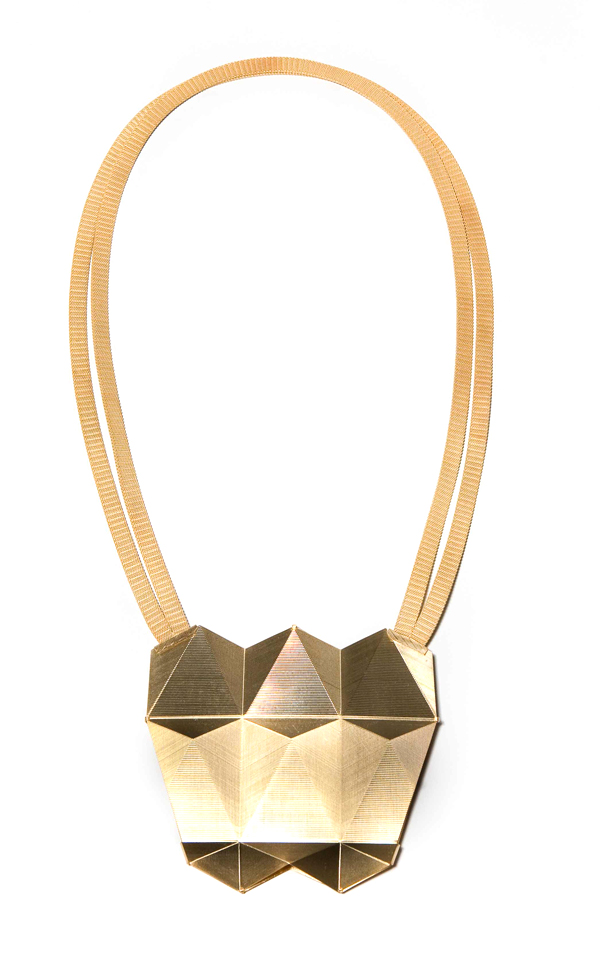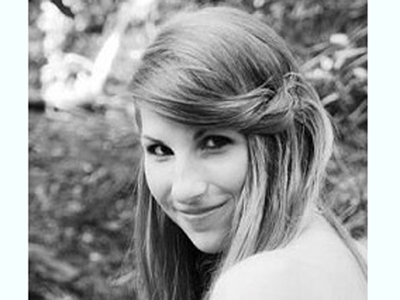 Frieda Doerfer’s exhibition Lines was recently on display at Galerie Ra. In this interview, Frieda provides us with insight about her use of line and shares the concepts behind her pieces.
Frieda Doerfer’s exhibition Lines was recently on display at Galerie Ra. In this interview, Frieda provides us with insight about her use of line and shares the concepts behind her pieces.
Missy Graff: Please tell me about your background. How did you become interested in making jewelry?
Frieda Doerfer: After I finished school, I thought that goldsmithing might be an interesting craft to learn. I managed to get an internship and I knew right away that I had found the right job. So I moved to Pforzheim, in the south of Germany, to pursue my apprenticeship as a goldsmith at the Goldschmiedeschule. After that, I studied jewelry design at Pforzheim University. I graduated in 2013 and since then I have been a self-employed jewelry maker and artist.
During your many years of training you discovered guilloché, an engraving technique. Can you please describe what inspired you to use this technique in your work?
Frieda Doerfer: Indeed. It has already been a few years since I started to explore the old engraving technique guilloché, also known as “engine turning.” I am still fascinated by the huge variety of possibilities that are created with basic forms like zigzags or wavy lines.
 Frieda Doerfer’s exhibition Lines was recently on display at Galerie Ra. In this interview, Frieda provides us with insight about her use of line and shares the concepts behind her pieces.
Frieda Doerfer’s exhibition Lines was recently on display at Galerie Ra. In this interview, Frieda provides us with insight about her use of line and shares the concepts behind her pieces.
Missy Graff: Please tell me about your background. How did you become interested in making jewelry?
Frieda Doerfer: After I finished school, I thought that goldsmithing might be an interesting craft to learn. I managed to get an internship and I knew right away that I had found the right job. So I moved to Pforzheim, in the south of Germany, to pursue my apprenticeship as a goldsmith at the Goldschmiedeschule. After that, I studied jewelry design at Pforzheim University. I graduated in 2013 and since then I have been a self-employed jewelry maker and artist.
During your many years of training you discovered guilloché, an engraving technique. Can you please describe what inspired you to use this technique in your work?
Frieda Doerfer: Indeed. It has already been a few years since I started to explore the old engraving technique guilloché, also known as “engine turning.” I am still fascinated by the huge variety of possibilities that are created with basic forms like zigzags or wavy lines.
Tell me about the work you are presenting at Galerie Ra. How do your pieces relate to the title of your exhibition, Lines?
Frieda Doerfer: I love the guilloché patterns. If you look carefully, you can see that every ornament is created out of countless lines, which are engraved one after the other by hand, together with a guilloché machine, into the metal sheet.
While in school for my bachelor’s degree, I started a jewelry series entitled Terror Vacui—Frightening the Void because I was, and still am, obsessed with guilloché patterns. I couldn’t stop making them until the whole metal sheet was completely decorated. Inside of the folded pendants, the void can hide itself.

How do you see your jewelry developing? Do you plan to continue using guilloché in future bodies of work?
Frieda Doerfer: Yes, of course, it is my proudly cherished specialty. I like it as a fine detail on the large surfaces of my pieces, but I will not make the same work for my whole life. Now they look quite archaic, but in the future I plan to add color and other materials. I want them to have a more airy feel. I have some ideas, you will see…
It appears that you have chosen the necklace and pendant as your primary format. What is it about this format that appeals to you?
Frieda Doerfer: I enjoy working at this scale because the guilloché patterns need some space to develop. I want the pendants to hang symmetrically and in the center of the body. I would say that the position is very important for the charisma of each piece. It’s true that I love making necklaces, but I also make brooches, bracelets, and rings. You can see this variety of work at Galerie Ra.

Frieda Doerfer: Perhaps it sounds strange, but I like the very long and difficult process of making. Each piece is a challenge, and that is one of my favorite aspects. If I’m not concentrating enough, I’ll engrave a false line and the whole ornament will be ruined. If I solder the hollow pendants together and fire them too hot, the solder will float over the surface and will cover the engraved lines. The finished piece must be perfect.
What have you seen, heard, or read lately that you would like to recommend?
Frieda Doerfer: I recommend all kinds of technical museums, like the small Technisches Museum in Pforzheim or the huge Stiftung Deutsches Technik Museum in Berlin. There is so much to see and translate into jewelry. Even more so, I recommend being awake to your surroundings. Look at, talk to, smell, touch, and savor everything and you will never have a lack of ideas!
Thank you.




